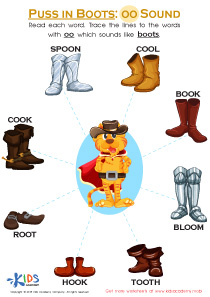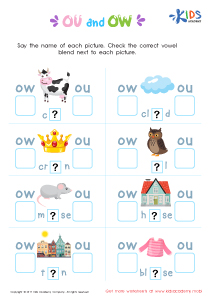Vocabulary expansion Normal Vowel Blends Worksheets for Ages 5-7
7 filtered results
-
From - To
Enhance your child's vocabulary with our "Vocabulary Expansion Normal Vowel Blends Worksheets for Ages 5-7." These expertly crafted worksheets are designed to help young learners master common vowel blends, boosting their reading and spelling abilities. Our fun, engaging activities and colorful illustrations make learning enjoyable, while reinforcing essential phonics skills. Perfect for early readers, each worksheet promotes confidence and comprehension, laying a strong foundation for future literacy success. Ideal for classroom or home use, these resources support effective, interactive learning. Start expanding your child's vocabulary today with Kids Academy's tailor-made vowel blends worksheets!
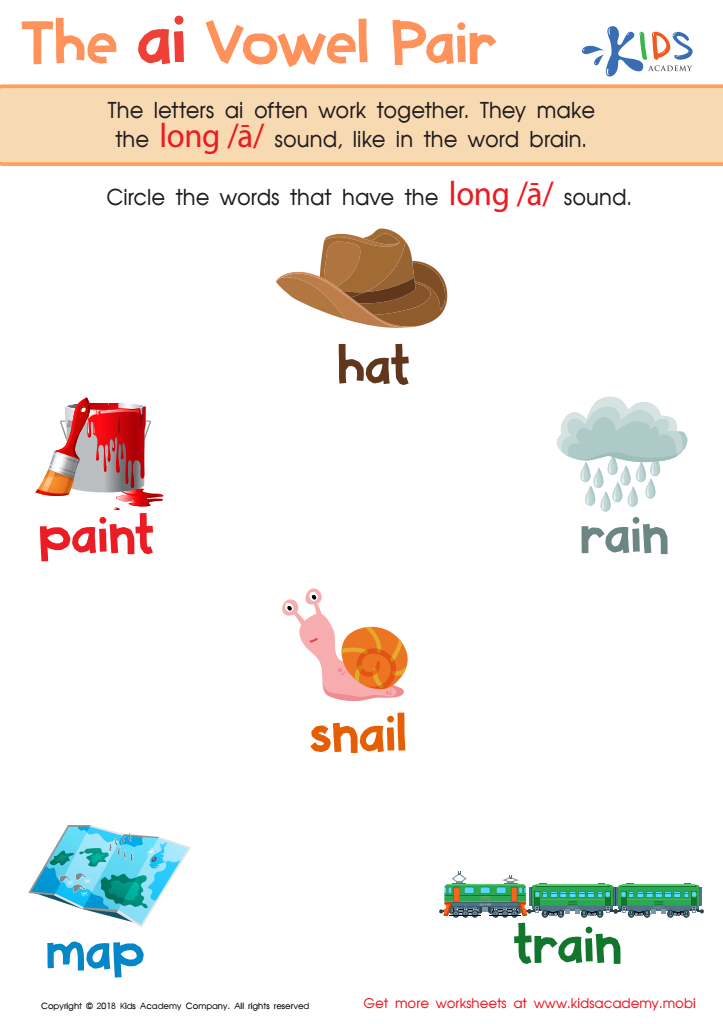

The AI Vowel Pair Worksheet
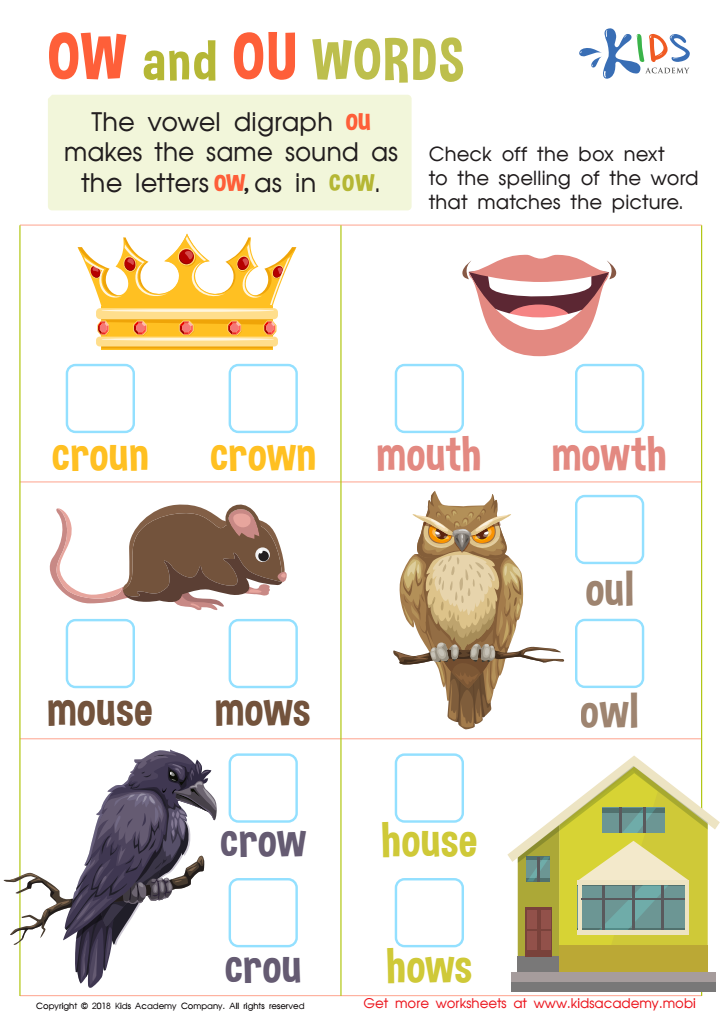

Reading: OW and OU Words Worksheet
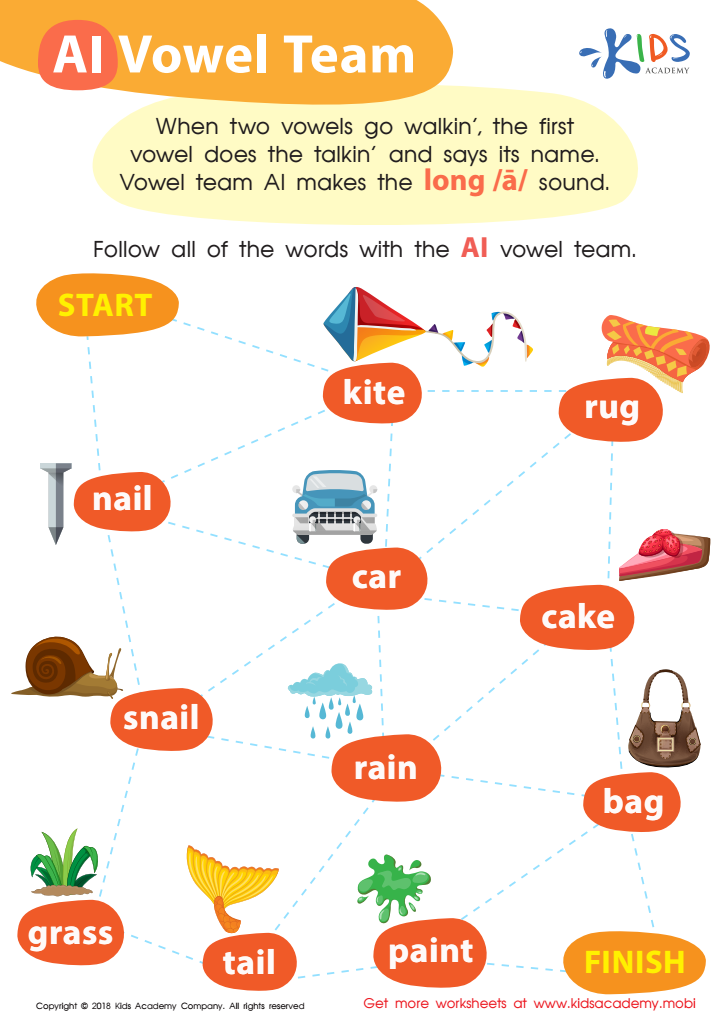

Reading: AI Vowel Team Worksheet
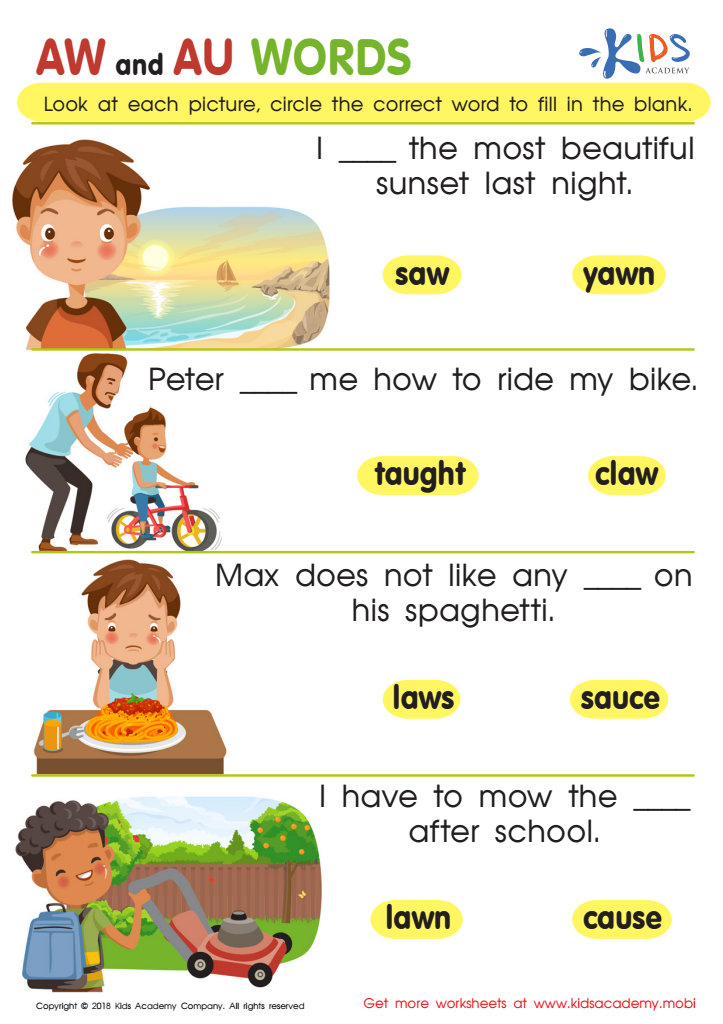

Reading: AW and AU Words Worksheet
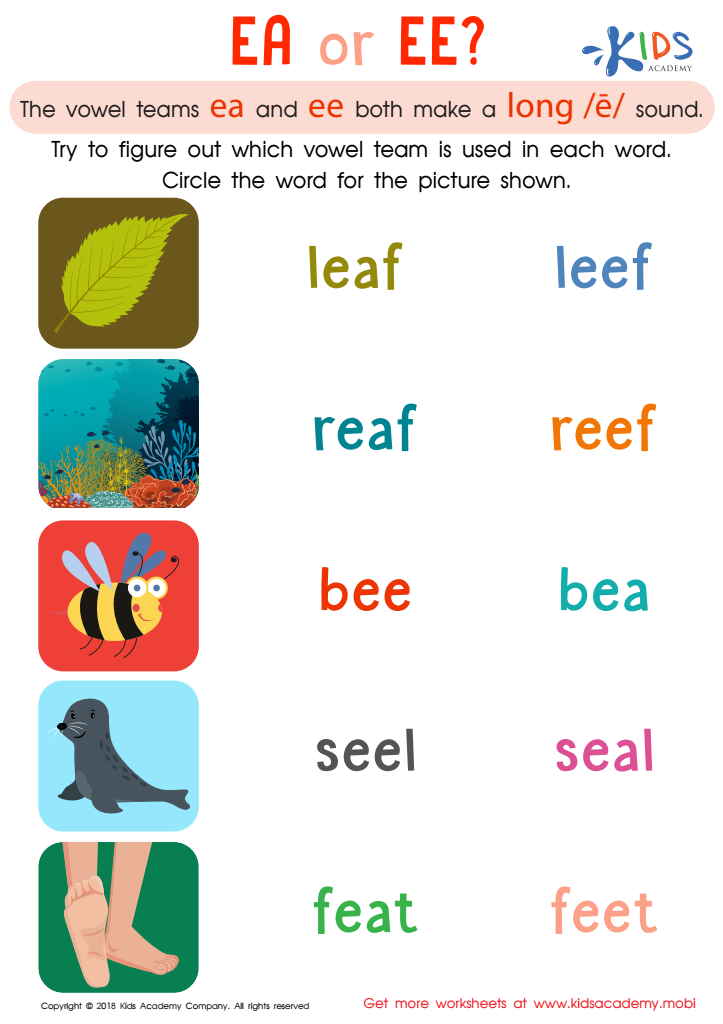

Reading: EA and EE Worksheet
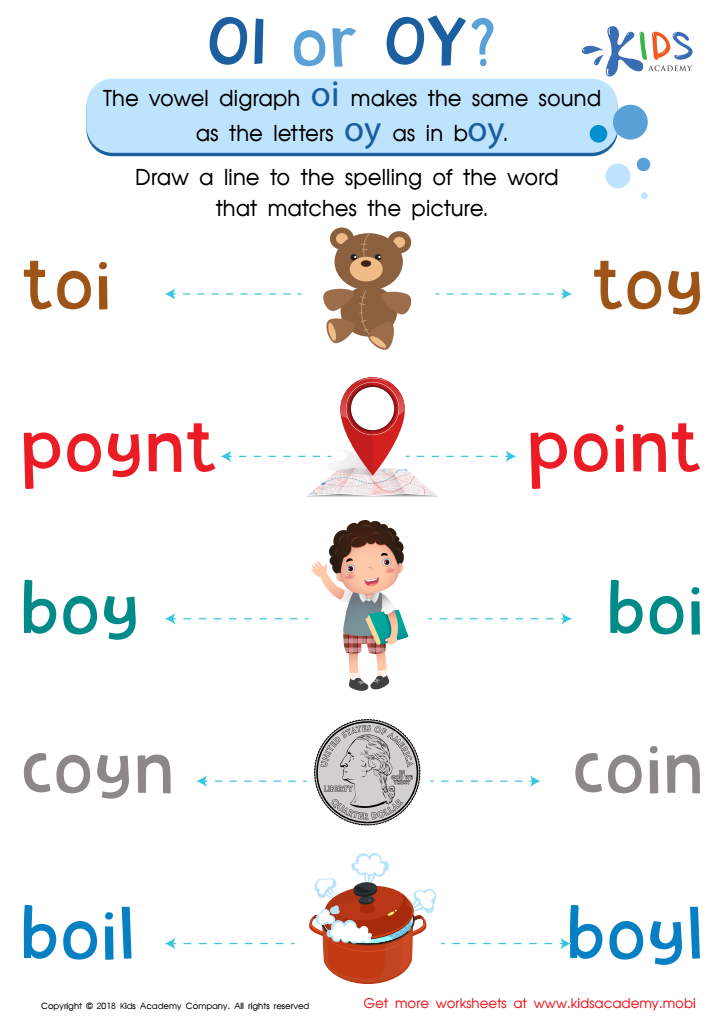

Reading: OI and OY Worksheet


Reading: EA as in Bread Worksheet
Vocabulary expansion and understanding normal vowel blends are crucial components of literacy development for children ages 5-7. At this formative stage, young learners are building the foundation for reading and writing skills which will support their future educational success. Expanding vocabulary equips children with the words they need to effectively express their thoughts, comprehend stories, and engage fully in learning activities. This not only enhances communication skills but also boosts cognitive development, aiding in critical thinking and problem-solving.
Normal vowel blends, such as ‘ai’ in "rain" or 'ea' in "bead," are essential for decoding and recognizing patterns in words. Mastery of these blends helps children to read more fluently and with greater comprehension. When children understand these common sound combinations, they can generalize this knowledge to decipher unfamiliar words, thereby becoming more autonomous and confident readers.
Parents and teachers should focus on these areas to foster a love for reading and to ensure children do not struggle unnecessarily with basic literacy skills. Early attention to vocabulary growth and phonemic awareness lays the groundwork for academic achievements, supports social interactions, and opens up worlds of learning and imagination. Investing in these skills early not only benefits children academically but also sets them up for lifelong success.
 Assign to My Students
Assign to My Students








